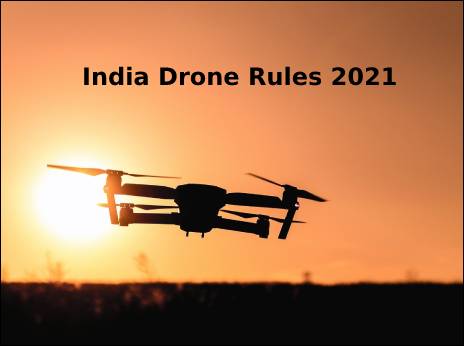
July 20 2021: The Indian government has again changed the rules for operating unmanned aerial vehicls ( UAVs), commonly called drones in India
In November 2017, the Civil Aviation Ministry published the first draft regulations for the civilian use of drones and they came into force in December 2018.(Full text here).
These were further expanded by the Director General of Civil Aviation into the “Unmanned Aircraft System Rules” on March 12 2021 ( Gazette notification here) which superseded the 2019 rules.
The 2018 rules were perceived to be heavy on regulation, making it difficult for anyone to deploy anything other than a Nano drone for recreational or commercial purposes without going through multiple certifications and testing that were both costly and time consuming. The March 2021 rules added to the complexity and even brought Nano-class hobby drones under some degree of regulation.
Two rules in particular discouraged drone enthusiasts and businesses from operating micro, small and medium sized drones. A requirement known as NPNT – No Permission, No Takeoff – meant permission needed to be taken before every single flight.
The second restriction has prevented most commercially meaningful uses of drones in India: the limitation that all flights had to be within visual range, what is known as Visible Line of Sight (VLOS) – which effectively limited flights to a range of about 300- 400 metres and heights of 60-120 metres. The 2021 drone rules were perceived by industry watchers as “a deathblow to an already struggling industry”.
New rules, this month
But on July 15, they were repealed and replaced by the Drone Rules 2021 with the public invited to comment by August 5, before they are finalized.
What remains unchanged is the classification of drones into five categories: (i) Nano: less than or equal to 250 gram; (ii) Micro: 250 gram to 2 kg; (iii) Small: 2 kg to 25 kg; (iv) Medium: 25 kg to 150 kg; and (v) Large: greater than 150 kg.
The latest Drone Rules even in draft form, have eased many of the regulations and may encourage private operators to launch many drone-based services as long as they don’t compromise safety and national security.
The bizarre requirement in the March 2021 rules, that if your Nano drone travels at more than 14 metres per second, or at a height of more than 15 metres or at a range of more than 100 metres, it is considered to be Micro drone and will require all sorts of licences and certifications including on board GPS navigation and geofencing, seems to have been dropped
Some readings from July 2021 draft Drone Rules ( courtesy Zee News/MSN)
Approvals abolished: unique authorisation number, unique prototype identification number, certificate of conformance, certificate of maintenance, import clearance, acceptance of existing drones, operator permit, authorisation of R&D organisation, student remote pilot licence, remote pilot instructor authorisation, drone port authorisation etc.
- Number of forms reduced from 25 to 6.
- Fee reduced to nominal levels. No linkage with the size of the drone.
- Safety features like 'No permission - no take-off' (NPNT), real-time tracking beacon, geo-fencing etc. to be notified in future. A six-month lead time will be provided for compliance.
- Digital sky platform shall be developed as a business-friendly single-window online system.
- There will be minimal human interface on the digital sky platform and most permissions will be self-generated.
- Interactive airspace map with green, yellow, and red zones will be displayed on the digital sky platform.
- Yellow zone reduced from 45 km to 12 km from the airport perimeter.
- No flight permission required upto 400 feet in green zones and upto 200 feet in the area between 8 and 12 km from the airport perimeter.
- No pilot licence required for micro drones (for non-commercial use), nano drone and for R&D organisations.
- No restriction on drone operations by foreign-owned companies registered in India.
- Import of drones and drone components to be regulated by DGFT.
- No security clearance required before any registration or licence issuance.
- No requirement of certificate of airworthiness, unique identification number, prior permission and remote pilot licence for R&D entities.
- Coverage of drones under Drone Rules, 2021 increased from 300 kg to 500 kg. This will cover drone taxis also.
- All drone training and testing to be carried out by an authorised drone school. DGCA shall prescribe training requirements, oversee drone schools and provide pilot licences online.